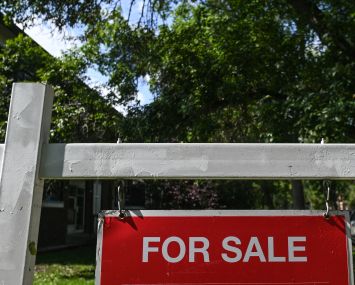Continuation Vehicles Driving Liquidity Infusion for Real Estate Investors
They work really well under certain conditions — and for certain amounts of time
By Andrew Coen October 7, 2025 7:00 am
reprints
Continuation vehicles, funds similar to those that aided real estate managers to hold on to assets during the 2008 Global Financial Crisis, are gaining traction during another period of market dislocation.
The long-range investment funds largely led by general partners (GPs) — previously known by different names such as restructuring funds, rollover funds or recap funds during the GFC — have emerged as a liquidity source during the last five years as commercial real estate sponsors confronted headwinds from the COVID-19 pandemic and rising interest rates. In an effort to avoid selling at a loss and with refinancings far more challenging due to higher borrower costs and more stringent underwriting standards, continuation vehicles are another means of maintaining assets until the storm clouds clear.
The increased use of continuation vehicles drove a 52 percent increase in GP-led deals in the real estate secondaries market in 2024, to $9.3 billion, according to data from Ares Management. The continuation vehicle surge also drove a 49 percent rise, to $14.6 billion, in the overall real estate secondaries market last year compared to 2023, according to Ares.
Miles Treaster, president of Americas capital markets at Cushman & Wakefield, said a big turning point that moved continuation vehicles more into the mainstream of the CRE world occurred in October 2020, when Blackstone executed a $14.6 billion recapitalization of BioMed Realty Trust. The deal involved selling BioMed, the largest private owner of U.S. life sciences properties, to a group led by existing BioMed investors. The existing BioMed investors were given an option to stay in and roll their interest into a new vehicle or to cash out.
Treaster noted that continuation vehicles became a funding option explored during the height of the COVID-19 pandemic, which was followed by rising interest rates that made refinancing certain assets far pricier. Continuation vehicles are gaining more attention now, according to Treaster, due to many private equity funds created in 2015 and 2016 with eight- to 10-year terms that are now hitting maturities with some assets remaining in limbo.
The continuation vehicle strategy has been largely used for alternative CRE property sectors such as senior housing, logistics and life sciences. It hasn’t permeated into the struggling major asset classes of office, hotels or retail due to challenges in reaching clarity on the true values of these properties due to many unknowns, according to Treaster.
“It’s not an everyday type situation,” said Treaster of when continuation vehicles can be utilized in CRE. “It’s not like you’re going to take 15 office buildings and throw them into a continuation vehicle, because you’re never going to come to terms on valuation between the [limited partners].”
Jennifer Morgan, partner at King & Spalding, said she has seen an increase in clients seeking to execute continuation vehicles in the last two years as traditional financing has faced more headwinds in the higher-for-longer interest rate climate.
“Right now, there’s a real pressure point because the actual expense of these assets became more expensive than when they were underwritten, so sponsors aren’t meeting their performance hurdles to get their incentive compensation — so they don’t want to sell,” Morgan said. “If you don’t send money back to investors, it’s very hard to ask them for new money. So some investors are putting pressure on to get money back, and it’s a great way to do it.”
Morgan said the process of establishing a continuation vehicle often happens at least two years before the closed-end fund is set to expire, given the many moving parts that need to be determined such as positioning plans for certain assets. She noted that sometimes continuation vehicles are formed around a subset of assets or even one specific property that needs more time to execute a business strategy, such as hospitality funds formed pre-COVID.
Prior use of continuation vehicles during the GFC, even if under a different name, is paying dividends now — more than a decade later! — for CRE sponsors and investors looking to utilize them today, according to Morgan, with more comfort around complications that can arise with the appraisals process. Morgan noted that over the last two decades there has been a rise in open-ended real estate funds in need of national appraisers compared to the past when the work was done at a more localized level as more awareness of issues has taken hold.
“Historically, you had local appraisers who knew a certain market, and there wasn’t really anyone with a national reputation to make sure things were being done consistently because there are variables in how you do appraisals, like comparing to other sales or replacement costs,” Morgan said. “There’s been a rise of service providers who provide appraisal management nationally, so I think investors have gotten more comfortable with appraisals being across a portfolio and across different locations and geographies utilizing the same criteria.”
Also aiding the use of continuation vehicles now is a number of investment banks getting increasingly involved with fairness opinions for CRE transactions. Morgan said these banks are providing independent assessments of whether financial metrics in deals measure up for investors.
Morgan said more availability of external resources for valuation comfort can create more ease when tackling a complex continuation vehicle process, where multiple parties need to get on the same page.
Also, completing valuations early on when exploring a continuation vehicle is important to maintain as smooth a process as possible and avoid the uncertainty that often slows down many deals.
“Where we’ve seen things take awhile is where there is less certainty about who’s going to stay in and who’s going to cash out, because that then defines how much money you need to raise from existing or new investors,” Morgan said. “Unlike when you’re doing primary fundraising and have a pipeline and anticipate spending $1 billion over the next three years, here we don’t actually know how much money you’re going to need because we don’t know who’s staying in and who’s cashing out.”
Zhijun Yang, assistant professor of finance at the University of Pittsburgh at Johnstown, said continuation vehicles appeal to a variety of investors seeking stakes in existing assets that are compatible with their current portfolio. Yang noted that when new LPs are brought in to replace investors who exited the previous fund, different metrics are created under a new contract, with the new life span generally for a shorter period of around five to eight years.
Yang said he expects continuation vehicles to be adopted more in the next year given expectations that borrowing costs will remain elevated and the economic uncertainty from issues like President Donald Trump’s tariff policy.
“Many general partners may be forced to find a continuation vehicle fund to hold commercial real estate assets for a little bit longer because they can’t find an exit opportunity,” Yang said. “Economic conditions have fundamentally changed from when they entered this type of arrangement eight to 10 years ago.”
As continuation vehicles have become more prominent in recent years, some speciality investment management firms have stepped up to sponsor these platforms, including Evercore, Lazard, Houlihan Lokey, StepStone Group and the Townsend Group. Cushman & Wakefield’s Treaster noted that some of the big GP-led players such as Blackstone, KKR and TPG have also begun to back continuation vehicles.
While there is potential for growth of continuation vehicles, Treaster said complications with lining up limited partners (LPs) for the structure and the often more than six-month time period it takes may limit its use even as they become attractive for CRE sponsors in an economically volatile environment.
“I like the idea of these continuation vehicles when GP and the LP are aligned,” Treaster said. “It’s a very tough process, and you have to get a lot of people on board, and they are not easy to execute.”
Andrew Coen can be reached acoen@commercialobserver.com.


